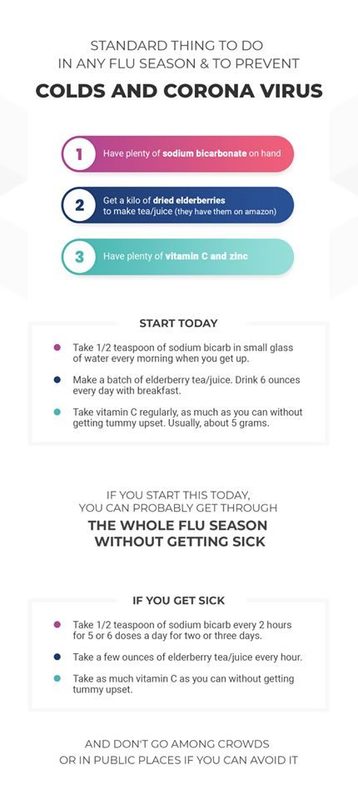
By Gabriela Segura, M.D.,
I practice Family Medicine in Europe and as everybody knows by now, we’re in the midst of Coronavirus madnessTM which we are told is now an official global pandemic. It’s true that we’re living through a critical, decisive and increasingly divisive era, but the real issue is something other than what the media and politicians would have us believe.
Let’s review our society’s problems for some much needed perspective.
Very Dark Statistics, Indeed
Regardless of how many people on the planet are actively aware of it, the truth is that tens of millions of people drop like flies from illness, depression and self-destruction every single day. And that’s a trend that has been ongoing for, well, a very long time.
According to the WHO assessment of deaths by cause for the years 2000-2016, close to 800,000 people die due to suicide every year, which is one person every 40 seconds. And those who have been paying attention will know that, in the past few years, the generalized state of the public’s mental health has not improved.
Data analyzing 55 million insured American millennials (aged 21 to 36) in 2017 found that since 2013, millennials have seen a 47% increase in major depression diagnoses (Hoffower, 2019).
In the UK, prescriptions for antidepressants have more than doubled in the last decade. In 2016, there were 64.7 million antidepressants dispensed – 33.7 million (108.5 per cent) more than in 2006, when there were 31.0 million (NHS Digital, 2019).
The U.S. saw a 64% increase in the percentage of people using antidepressants between 1999 and 2014 (Winerman, 2017). However, the U.S. Center for Disease Control and Prevention (CDC) reported that antidepressant use in the U.S. has increased nearly 400% in the last two decades, making antidepressants the most frequently used class of medications by Americans aged 18-44 (Segura, 2013). The U.S. population makes up 5% of the world population, yet is prescribed two-thirds of all psychiatric drugs used worldwide.
In Japan, suicide is the leading cause of death among children aged 10 to 14 for the first time in the postwar period (Kyodo, 2019). Suicide rates among American children have increased 77% over the past 10 years, with that number even higher during the school year (Vibes, 2018).
An average of 20 American veterans committed suicide daily in 2014 according to the US Department of Veterans Affairs. Since 2001, veteran suicides increased by 32%, while civilian suicides among adults increased 23% (RT, 2016).
Another report published in June 2019 revealed that suicide rates are officially at their highest level since World War II with 1.4 million attempting suicide in 2017 (Durden, 2019). More than 70,000 people committed suicide in 2017, and 17.3 million (7%) of Americans are experiencing mental health issues. US life expectancy has also declined for three straight years, in part because of the surge in drug overdoses and suicides. This is the first time in a little over a century that life expectancy fell for three consecutive years.
According to a report that analyzed the causes of preventable deaths in America in 2017, for the first time in history, Americans are more likely to die from an accidental opioid overdose than in a vehicle crash. If it’s a consolation, the odds of dying from an opioid overdose are still one in 96 vs one in 6 from heart disease or one in 7 from cancer (Mazzei, 2019). In fact, 1 out of 2 men and 1 out of 3 women will get cancer in their lifetime.
The World Drug Report from the UN Office on Drugs and Crime (UNODC) revealed that in 2017 some 53.4 million people had used opioids in the last year, a 56% increase on 2016’s estimate. Globally, some 35 million people are estimated to suffer from drug use disorders, and opioids are responsible for two thirds of the 585,000 people who died as a result of drug use in 2017. North America’s synthetic opioid overdose crisis also reached new heights in 2017, with more than 47,000 opioid overdose deaths recorded in the United States, an increase of 13% from the previous year, and 4,000 opioid-related deaths in Canada, a 33% increase from 2016 (UNODC, 2019).
In fact, deaths of despair – referring to suicides, alcohol and drug overdoses – have reached record levels in the United States according to a 2017 report that examined data from all 50 states and Washington, D.C (Edwards, 2019) . Rates in West Virginia, Ohio, Pennsylvania are at least double the national average of fatal drug overdose rates. West Virginia had the highest drug overdose death rates, fuelled mostly by the opioid epidemic. What’s more, those rates rose by 450% from 2005 to 2017, according to the report (Edwards, 2019). But it’s not just prescription painkillers and heroin that are driving these death rates. The study authors also point to fentanyl and other potent synthetic opioids that are creeping into illicit drugs such as cocaine. Fentanyl is similar to morphine, but 50 to 100 times more potent.
On top of the above, and according to rough estimates, 129 million children worldwide have ADHD (CHADD, 2019). The Center for Disease Control and Prevention (CDC) reports that 11% of all children in the U.S. aged 4-17 have been diagnosed with attention deficit disorder (ADHD or ADD) — that was roughly 6.1 million American children in 2016, a 43% increase since 2003 (ADHD Editorial Board, 2019). Boys are almost three times more likely to be diagnosed with ADHD (13.2%) than girls (5.6%). In adults, the rate is much lower (about 4.4%), but experts caution that this reflects only reported diagnoses – the prevalence of ADHD may be significantly higher since many adults, particularly women with inattentive symptoms, remain undiagnosed.
The total number of people with dementia worldwide in 2015 is estimated at 47.5 million. The total number of new cases of dementia each year worldwide is nearly 7.7 million, implying 1 new case every 4 seconds. The number of people with dementia is expected to increase to 75.6 million in 2030 and 135.5 million in 2050. These figures are almost twice the rate of projected population growth over that time period.
Between 2013 and 2017, early-onset dementia and Alzheimer’s diagnoses increased by 83% among commercially insured Americans aged 30 to 44. That age group includes the oldest millennials. Overall, early-onset diagnoses increased by 200% among commercially insured Americans between ages 30 to 64. That included a 50% jump among those aged 45 to 54 and by 40% for those aged 55 to 64. The average patient was diagnosed at age 49.
Rounding off our tour of depressing world statistics, data shows that this “epidemic of despair” – which they define as drug and alcohol deaths plus suicide – is on track to kill more than 1.6 million people by 2025 if it continues to grow at its current rate (Buyniski, 2019).
And my apologies for all the dark statistics I left out. It’s impossible to cover the entire human tragedy of our current era.
In Perspective
As you can imagine, family medicine doctors deal with so many REAL tragedies on a daily basis that we can’t really get worked up by the flu, which has been pretty bad in the last few years, collapsing hospitals with patients piled up in the hallway, and with no protective mask for us poor doctors! Many vulnerable people die during the flu season, yet it is never propagandized, except when it’s time for the flu vaccine. For the most part, we move on and people eventually forget all about it. It’s like that each season. But despite the fact that this corona virus shows all the signs of being no more contagious – and possibly even less lethal than the seasonal flu – we are being encouraged, nay REQUIRED, to freak out about it.
At the clinic where I practice, the ‘red carpet’ in terms of lab and hospital support is being rolled out for patients with this “new virus”. But what about my other patients who have a neurological condition and have to wait for 9 months to see a neurologist because the specialty is completely booked up? Maybe neurological issues should be recategorized as “new virus”, and maybe then patients will get the priority evaluation they need and deserve.
Over this past winter, while on duty at my clinic, I’ve seen upwards of 40 people each morning with either a cold or the flu. That has been a pretty standard scenario for most of this season. My afternoons have been mostly spent dealing with the usual tragedies that no one seems to pay much attention to.
We literally see people dying every day, in one way or another, and it’s not coronavirus that’s taking them out. Nevertheless, the death rate from the coronavirus is nowhere near as high as that of the average seasonal virus. In case you didn’t know, most people are not doing as well as they tell you when you greet them. Cases of heart failure, COPD, cancer and other ‘modern illnesses’ have already reached real pandemic levels, but again, no one is getting hysterical about those. So never mind the coronavirus, in fact, the odds are very good that you’ll survive it if you catch it. And don’t be surprised if you probably already had it. It just wasn’t an issue until you were told it was.
Above All, Don’t Succumb to The Pathological Hysteria
Don’t let stress take its toll on you. Stress leads to inflammation which leads to disease.
According to Sheldon Cohen from Carnegie Mellon University, “inflammation is partly regulated by the hormone cortisol and when cortisol is not allowed to serve this function, inflammation can get out of control”. (Cohen et al., 2012)
Prolonged stress alters the effectiveness of cortisol to regulate the inflammatory response because it decreases tissue sensitivity to the hormone. Specifically, immune cells become insensitive to cortisol’s regulatory effect. Runaway inflammation is thought to promote the development and progression of many diseases. The same mechanism is at play in type 2 diabetes when cells become insensitive to the hormone insulin which spikes continually in its effort to regulate blood sugar levels coming from a high carbohydrate diet.
Cohen showed how people suffering from psychological stress are more susceptible to developing symptoms of the common cold due to the inflammatory response that is triggered by the body’s effort to fight the infection. The greater the body’s inflammatory response to the virus, the greater the chance of having symptoms of the common cold.
In Cohen’s study, experiencing a prolonged stressful event was associated with the inability of immune cells to respond to hormonal signals that normally regulate inflammation. In turn, those with the inability to regulate the inflammatory response were more likely to develop colds when exposed to the virus and produced more inflammation-inducing chemical messengers such as cytokines when infected.
As Cohen explains, “when under stress, cells of the immune system are unable to respond to hormonal control, and consequently, produce levels of inflammation that promote disease. Because inflammation plays a role in many diseases such as cardiovascular, asthma and autoimmune disorders, this model suggests why stress impacts them as well.”
Take for instance the caregiver syndrome, a still largely unrecognized condition which manifests as exhaustion, anger, rage, or guilt resulting from an overwhelming and unrelieved duty of caring for a disabled or chronically ill patient such as someone with Alzheimer’s disease.
Chronic stress from caregiving affects the immune system in several ways. It decreases T cells which is a type of white blood cell that is of key importance to the immune system and is at the core of adaptive immunity, the system that tailors the body’s immune response to specific pathogens in order to destroy them and any toxic molecules they produce.
In caregiving syndrome there is also increased stress hormone levels such as cortisol for an extended period of time. A study by Miller and colleagues showed that even when cortisol levels were normal in caregivers of cancer patients, the pattern of gene expression in monocytes, another type of white blood cell involved in the body’s immune response, was altered so that they were relatively less responsive to the anti-inflammatory actions of cortisol and relatively more responsive to pro-inflammatory actions of a transcription factor called nuclear factor-kappa B, or NF-kB (Miller et al., 2008). Thus, just as Cohen research showed, caregivers’ white blood cells were unable to receive the signal from cortisol that tells them to shut down inflammation.
Increased production of cortisol affects memory as it undermines communication between brain cells involved in the formation and processing of memories, thus, affecting recall abilities.
Junctions between brain cells, called synapses, are crucial to memory collection and storage processes. Researchers have found that stress-induced release of corticotropin releasing hormone (CRH) in the hippocampus – the primary learning and memory region in the brain – led to the rapid disintegration of branch-like protrusions from brain cells in which synapses were located. CRH plays a crucial role in the stress response (University of California, Irvine, 2008).
Chronic stress slows down wound repair and leads to depression, anxiety, anger, high blood pressure, cardiovascular disease, diabetes, memory loss, and a compromised immune system, reducing the care-giver’s life expectancy. Caregivers suffer from a depressive exhaustive state as they see their loved ones deteriorate, which leads to disintegrating emotional and health problems.
Burnout signs may manifest in symptoms such as tiredness, sleep disorders, aches and pains, sugar or salt cravings, light-headedness, exacerbated PMS or menopausal symptoms, mood swings, mental fog, hormonal imbalances, muscle tension, autoimmune disorders, indigestion, etc.
Breathing to Regulate Stress
To relieve stress instantly, I highly recommend the Éiriú Eolas program which uses ‘Pipe Breathing’ as the key to instant stress reduction and control. Pipe breathing brings the entire body-mind system into balance. You can use it in any place at any time for instantaneous results: controlling fears and phobias, recovering quickly from shocks, or in high-energy situations where decisive action is required and stress control is essential.
It is pipe-breathing that stimulates the vagus nerve, the heart of the parasympathetic nervous system – the body’s own ‘anti-stress system’. The vagus nerve is your calming and relaxing nerve which goes from your brain down to your abdomen, dividing into multiple branches that reach your throat, your heart, and all your viscera. It is also called ‘the wanderer’, as it wanders throughout your body. When you take deep breaths in specific rhythm sets and meditate with Éiriu Eolas, this wandering nerve is activated and it releases acetylcholine, which reduces the production of inflammatory molecules like cytokines that are linked to every known disease. For instance, brain inflammation is linked to every known mood, behavior, attention, memory, or degenerative disease.
The vagus nerve enhances neurogenesis (the creation of brain tissue) by increasing brain-derived neurotrophic factor (BDNF) output, which is like a super-fertilizer for your brain cells. It helps repair brain tissue, but also helps with tissue regeneration throughout your body. BDNF plays an important role in neuronal plasticity, which is essential for learning, thinking and higher levels of brain function. Practising Éiriú Eolas will therefore kick-start or improve neurogenesis and neuroplasticity, processes that are essential for the maintenance of brain functions as we age, but also for recovery from trauma, emotional adaptation, and learning.
When we stimulate the vagus nerve, we produce what is called sensory motor rhythm (SMR). This is an activated pattern in the parietal cortex that is associated with a state of relaxed vigilance, mental focus and heightened awareness. People who exhibit this pattern show improved sleep, digestion, thinking, memory, and their brains become much more resistant to seizures. In addition to that, they have fewer cravings and addictions.
Vagus nerve stimulation also releases hormones such as prolactin, vasopressin and oxytocin. These are anti-stress and social-bonding hormones. Oxytocin is known as the ‘cuddle hormone’, so it is no wonder that the vagus nerve has been called the ‘nerve of compassion’. In fact, the vagus nerve is intertwined with neural networks involved in pro-social and empathetic communication, involving muscle groups that are related in care-taking. Oxytocin is intimately involved in the experience of trust and love.
During the breathing exercises and the meditation portion of the program, several neurochemical changes take place. Levels of the anti-stress hormones GABA, melatonin and serotonin are increased. GABA and serotonin are neurotransmitters that make us happy, relaxed and peaceful. People with anxiety, panic attacks, and insomnia have low levels of GABA. Serotonin is necessary for a happy mood, reducing anxiety and irritability and helping us to sleep. Melatonin is our natural sleep-regulating hormone.
All these natural chemicals are enhanced during Éiriú Eolas without the need for Big Pharma’s prescription drugs! Think about it: they only work at all because there are receptors in our bodies that bind with them. If we can activate and regulate these receptors ourselves, consciously, well then, who needs Big Pharma?…
You can find the entire program online:
Even though I’ve seen several dozen flu patients in one day, I’ve never missed a day from work. I’m not scared about the coronavirus either. There are pretty horrible things that can befall anyone in life, and coronavirus isn’t one of them. More to the point, there are things you can do to take better care of yourself and your family and friends. Patients, family, friends and myself have a basic protocol that helps us fight any respiratory infection: Keep it real and keep calm!
To your good health,
Dr. Gaby
References
ADHD Editorial Board. (2019, November 08). ADHD statistics. Retrieved November 09, 2019, from additudemag.com
Buyniski, H. (2019, June 19). ‘Deaths of despair’ soaring among gen z & millennials: ‘it’s the economy, stupid’. Retrieved November 19, 2019, from RT.com
Cohen, S., Janicki-Deverts, D., Doyle, W. J., Miller, G. E., Frank, E., Rabin, B. S., & Turner, R. B. (2012). ‘Chronic stress, glucocorticoid receptor resistance, inflammation, and disease risk’. Proceedings of the National Academy of Sciences, 109(16), 5995-5999. doi:10.1073/pnas.1118355109
Durden, T. (2019, June 21). ‘Something isn’t right in the “greatest economy ever” as American suicide rates Hit WWII levels’. Retrieved November 07, 2019, from ZeroHedge.com
Edwards, E. (2019, June 12). ‘U.S. death rates From suicides, alcohol and drug overdoses reach ALL-TIME HIGH’. Retrieved November 19, 2019, from nbcnews.com
Hoffower, H. (2019, June 04). ‘Depression is on the rise among millennials, but 20% of them aren’t seeking treatment – and it’s likely because they can’t afford it’. Retrieved November 06, 2019, from businessinsider.com
Kyodo. (2019, March 22). ‘Suicide now leading cause of death among children aged 10 to 14 in Japan’. Retrieved November 07, 2019, from japantimes.co.jp
Mazzei, P. (2019, January 14). ‘Opioids, car crashes and Falling: The odds of dying in the U.S.’ Retrieved November 19, 2019, from nytimes.com
Miller, G. E., Chen, E., Sze, J., Marin, T., Arevalo, J. M., Doll, R., . . . Cole, S. W. (2008). ‘A functional genomic fingerprint of chronic stress in humans: Blunted glucocorticoid and increased nf-κb signaling’. Biological Psychiatry, 64(4), 266-272. doi:10.1016/j.biopsych.2008.03.017
NHS Digital. (2019, October 09). ‘Antidepressants were the area with largest increase in prescription items in 2016’. Retrieved November 06, 2019, from digital.nhs.uk
RT. (2016, July 8). ’20 veterans committed suicide every day in 2014 – study’. Retrieved November 07, 2019, from RT.com
Segura, G. (2013, April 22). ‘Mass nervous breakdown: Millions of Americans on the brink as stress pandemic ravages society’. Retrieved November 06, 2019, from Sott.net
University of California, Irvine (Ed.). (2008, March 13). Short-term stress can affect learning and memory. Retrieved October 25, 2019, from sciencedaily.com
UNODC. (2019, June 26). ‘United Nations office on drugs and crime’. Retrieved November 19, 2019, from unodc.org
Vibes, J. (2018, June 09). ‘Multiple studies show disturbing trend of child suicide rates exploding when school starts’. Retrieved November 07, 2019, from thefreethoughtproject.com
Winerman, L. (2017, November). ‘By the numbers: Antidepressant use on the rise’. Retrieved November 06, 2019, from apa.org. American Psychological Association, Vol 48, No. 10
Dr. Gaby was born into a mixed Eastern-Western family in Costa Rica, and she is a countryside family medicine doctor and former heart surgeon. Her research in the medical field, the true nature of our world and all things related to healing have taken her to Italy, Canada, France and Spain. Her writings can be found at The Health Matrix.
Disclaimer: We at Prepare for Change (PFC) bring you information that is not offered by the mainstream news, and therefore may seem controversial. The opinions, views, statements, and/or information we present are not necessarily promoted, endorsed, espoused, or agreed to by Prepare for Change, its leadership Council, members, those who work with PFC, or those who read its content. However, they are hopefully provocative. Please use discernment! Use logical thinking, your own intuition and your own connection with Source, Spirit and Natural Laws to help you determine what is true and what is not. By sharing information and seeding dialogue, it is our goal to raise consciousness and awareness of higher truths to free us from enslavement of the matrix in this material realm.
 EN
EN FR
FR





























Wonderful article and pipe breathing is new to me and I intend to explore it.
THANK YOU! THIS JUST RESTORED MY HOPE FOR AND RESPECT FOR THE MEDICAL PROFESSION! A profession becoming increasing aware of the damage pharmacueticals are causing.